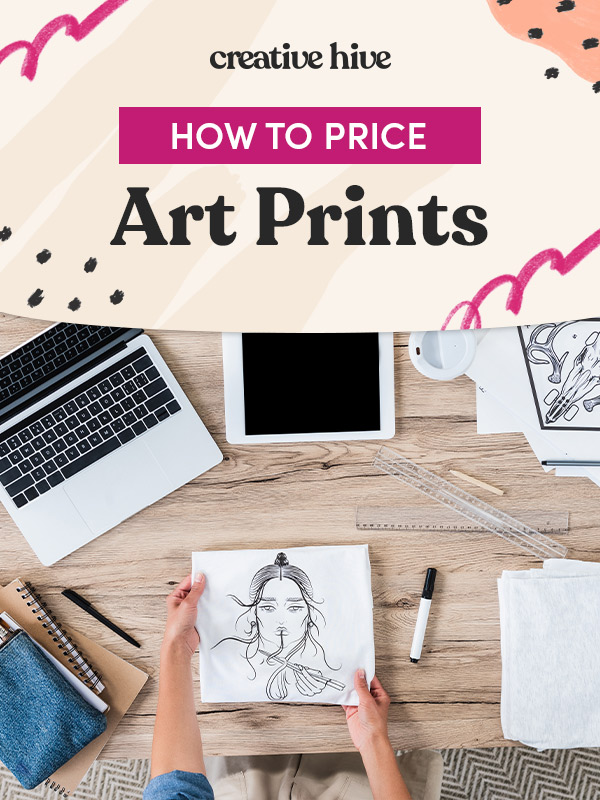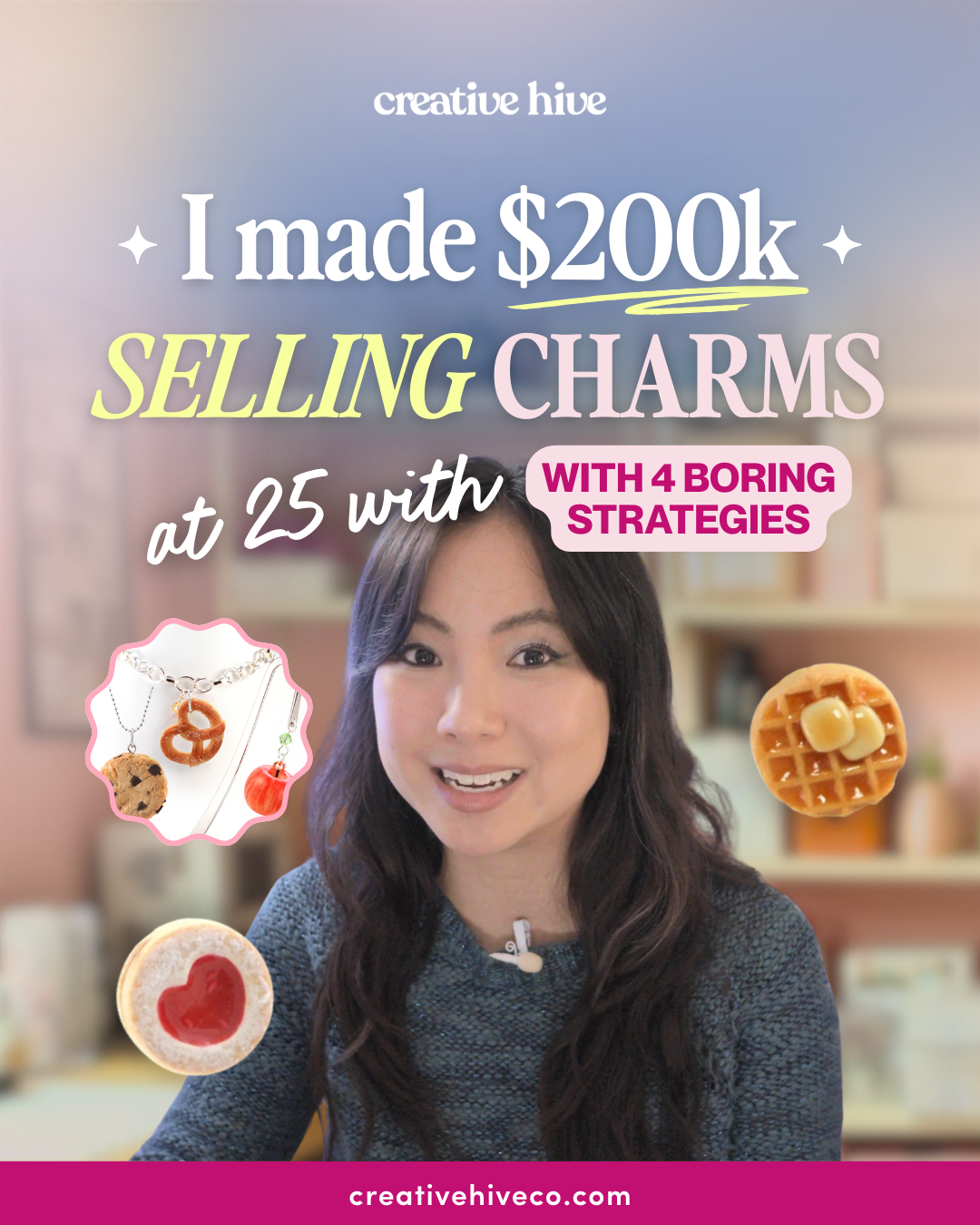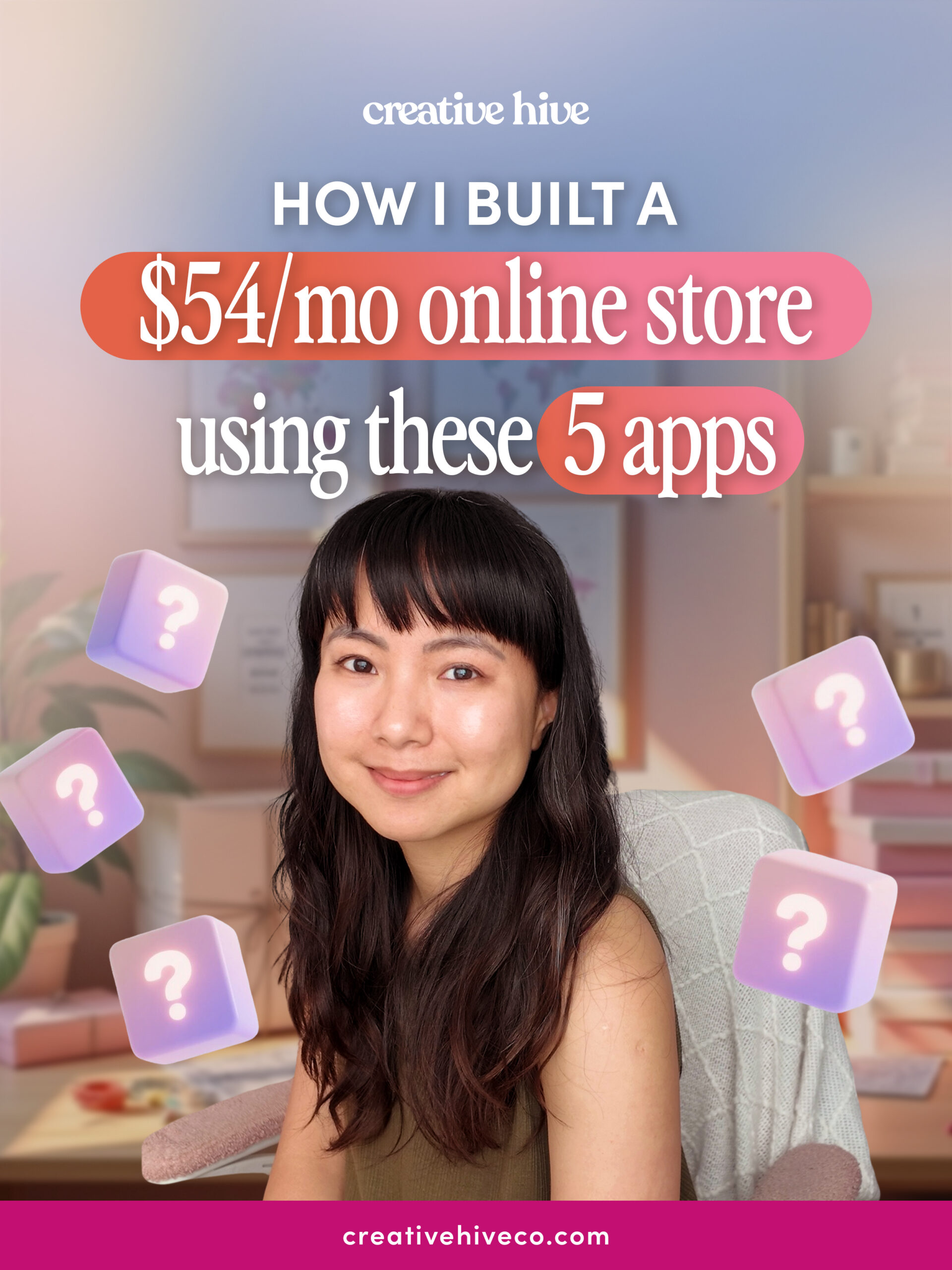I want to help you build a sustainable, profitable handmade business that makes you consistent income and sales. I only ever teach or recommend marketing, social media, pricing, production and branding tips that I’ve personally used successfully in my own 7-figure handmade businesses.
I'm Mei, from Los Angeles!
Read More
Popular Posts You'll Love
Looking for something?
Categories
starting a business
get more traffic
running a business
make more sales
branding
growing a business
mindset & productivity
podcasts
pricing & money
product photography
reviews
selling on etsy
selling on amazon
social media
selling wholesale
- Facebook0
- Twitter19
- Pinterest77
- 96shares
In this post, I’m giving you the exact steps that you need to make sure you’re pricing your art prints correctly so you can stop undercharging, start making a profit, and get paid what you’re worth.
Development Cost
Today I’ll just be going over art prints. I’ll have a totally separate post later that talks about how to price your original art because it is a very different strategy.
Art prints are great because once you’ve done the original artwork, you can make as many prints as you’d like and then sell them with a minimal amount of work.
It’s this same factor that makes it difficult to calculate how you should price it out.
Before I start talking about the details of pricing your prints and figuring out what price works for your market, I want to take a moment to remind you that it’s really important to keep in mind that these prints are pieces of art that took you a long time to make.
Even if the original piece didn’t take you 10 or 20 hours to make, it took you your whole lifetime of developing the skills to be able to make this artwork come to life.
So it’s really important that you price your pieces so that you’re paid for all of the work and experience that goes into it.
The biggest mistake I see with small creative businesses is not pricing their pieces high enough and undervaluing their work.
With any creative business, there is a development cost involved. This is even true for my business, Tiny Hands.
I make polymer clay scented food jewelry. I didn’t just make a waffle necklace one day and have it be completely perfect. It took me a lot of effort to discover how I wanted to sculpt the clay and what formula I needed to use to get the scent right.
When you’re pricing any piece of work that you’re selling, it’s important that this initial development time is included in the calculation of the final price, because you will spend hours creating the initial work of art before you produce the exact pieces you’re selling.
So there are two factors you need to keep in mind when you’re deciding how to price your art prints. The first is the cost and the second factor is the market.
Cost of Making a Print
Initially, I’m just going to talk about the cost of literally making the print.
You’ll want to do your research here to find out where you’ll be having your prints produced.
- Are you making them yourself?
- Are you going to use a print service?
- What materials are you using?
- How long does it take you to organize getting the printing done?
If it takes you 45 minutes to upload a file, load the inks, load the paper type, and then later cut the paper down to the correct size, then this is time that you need to calculate in your per item costs.
This cost includes the frames, the canvas, and anything that touches your print and is included in the final production.
The Market
You want to spend quite a bit of time doing your market research.
Look for similar types of pieces and what they’re charging. For example, if you’re doing watercolor prints, what are other watercolor prints priced at?
You want to compare apples to apples, so look at the materials.
- If you’re making canvases, then what are other people who are printing on canvas charging?
- If you’ve got a print size that’s 16×20 inches, then what are other people who are printing 16×20 inch pieces charging?
Write down the ranges including how many sales that shop has so you know what sizes and materials are popular. Then you can decide what options you definitely want to offer your customers and what to leave out.
I recommend doing this step on Etsy so that you can see all of this information easily.
Once you do all of this research, you will have two different numbers. You’ll have a per item cost and you’ll have a rough idea from your market research about what your style of art could be priced at.
Now what you need to do, and this is as much art as it is science, is come up with a cost that takes into account the cost per item, the market research, and the profit.
This is very important!
For example, let’s say that every print you make costs you $5 in material costs. You do a bit of research and find that if you do it on one kind of paper you can sell your print for $15. Well, that’s $10 over your literal materials cost.
Generally, it’s a good idea to price your products at 2x-4x, if not more, the material costs.
So if you’re able to sell your print at $10, great! But you’re seeing other people sell a similar print for $15, you can decide how you want to price yours.
Do you want to be known as the more affordable option compared to other shops and charge $10, or do you want to be known as the shop that’s higher end? Maybe you provide better service or you have more authority in your space than another artist. These are questions you need to ask yourself.
What Will the Market Bear?
One thing that I’ve observed is you want to be at the higher end of what the market will bear.
Not only because you deserve to be paid for your labor, your skills, and you need a profit for your business to be successful, but a consumer perceives a higher price as being an indicator of a higher quality product.
If you go to a store and you see a pair of shoes and they are only $30 then you see another pair for $120, the average consumer perceives the $120 pair of shoes as a better quality, even if they’re not!
In fact, in the fashion and makeup world, many high brow brands are producing the same products with the same ingredients in the same factory as their lower price brand competitors.
But because of the higher price, we perceive that as higher quality.
Keep this in mind as you’re pricing. You want to be at a competitive price point with other people and it won’t serve your shop to be at the bottom price point.
The opposite is true as well, people might think there’s something wrong with your product if you price it too low. It can make you seem less trustworthy. Almost like it’s too good to be true.
When The Market Can’t Bear Your Price
Say you’re in a situation where your market research reveals that you can’t price your art what you had hoped to earn.
One idea is to adjust the medium you’re using!
For example, if you do a print on a tea towel that’s going to be valued at less than doing a print on a canvas, even if it’s the same artwork.
There’s only so much someone’s going to pay for a tea towel! In most cases, that is much less than someone will pay for a piece of art that hangs on their wall.
In the same way, a Giclee’ fine art print will be valued much more than something printed on regular paper from your printer at home.
Look at T-Shirts. T-Shirts will sell for far less than a canvas print, but you will also be able to sell more of them because you’ll have a larger audience willing to buy.
So all of these things are things to think about as you’re determining the final medium.
Branding
The last thing I want to touch on is branding. Once you’ve determined a price be sure to boost your branding and marketing to ensure that your product is perceived as worth the amount of money that you’re charging!
You can have the most beautiful art in the world that’s printed on the highest quality paper, but it will not sell if you have a crummy website and really bad photos.
So go through the extra effort to make sure all your marketing is at the same level as the price of your product!
I hope you’ve enjoyed those few tips about how you can price your art prints.
If you enjoyed this post or have any questions, leave a comment below. Don’t forget to check out my YouTube channel for more tips and inside secrets!

Leave a Comment
Liked this article? Share it!
Unlock a Profitable Handmade Business
in Just 12 Weeks Without Using Etsy
or Social Media
FREE WORKSHOP
This workshop is for anyone who makes and sells a handmade or physical product, including jewelry designers, artists, paper designers, bath & body product makers and more!
What You'll Discover
The #1 mistake people make with Etsy & social media that causes shops to FLOP
The secret to making it with your handmade shop so it's no longer just a hobby
How to make sales in your handmade shop with ease so you can finally get to 6-figures
TAKE ME THERE
Your email address will not be published. Required fields are marked *
Leave a Reply Cancel reply
About
Blog
A Sale A Day
Student Login
Free Class
Contact
Terms
Become A Student
Watch On YouTube
Student Reviews
See My Handmade Shop!




This is a great post, thank you!